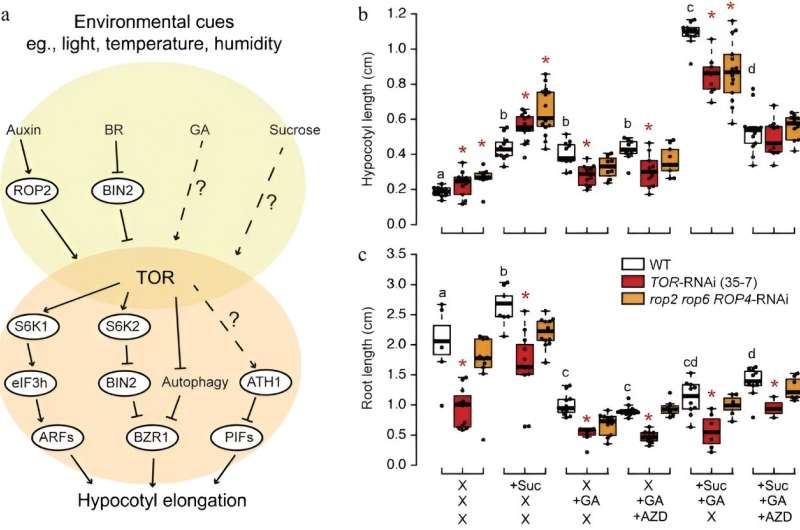This article has been reviewed according to Science X's editorial process and policies. Editors have highlighted the following attributes while ensuring the content's credibility:
fact-checked
trusted source
proofread
The role of TOR signaling in enhancing graft success and crop vigor

A research team has delved into the Target of Rapamycin (TOR) signaling pathway in plant grafting, emphasizing its role in regulating seedling vigor, graft junction healing, and shoot-to-root communications. Exploring TOR's involvement offers a promising avenue for improving grafting techniques and understanding plant communication, with the potential to significantly impact agricultural productivity and sustainability.
Grafting, an ancient horticultural practice crucial for plant breeding and cultivation, merges the traits of different species or cultivars to overcome various agricultural challenges. The technique's success depends on factors like seedling strength and effective graft healing.
Recent research highlights the significant role of the TOR signaling pathway in plant growth and development, including its influence on grafting outcomes. Recent studies have also shown that the TOR signaling pathway integrates growth, nutrient and stress response, and has the potential to improve grafting by regulating pre-grafting growth, promoting graft junction healing and enhancing shoot-root communication in grafted plants. In-depth studies on the role of TOR signaling in grafting may provide new avenues for crop improvement and agricultural innovation.
A study published in Vegetable Research elucidates the contributions of TOR signaling to grafting processes.
The research team explores the TOR signaling pathway in grafting, focusing on focusing on its role in the regulation of seedling vigor prior to grafting, healing of graft junction and shoot-to-root communication.
In greenhouses, factors like insufficient light and inadequate nutrient supply can lead to weakened seedlings, adversely affecting graft success. The TOR pathway, sensitive to light and other environmental signals, plays a central role in plant development by regulating growth in response to these signals. Specifically, the pathway is involved in skotomorphogenesis and photomorphogenesis through light-mediated regulatory mechanisms and regulates key processes such as hypocotyl elongation.
The research highlights the dynamic interactions between TOR signaling and environmental factors, including temperature and light, suggesting that these interactions significantly influence seedling vigor and grafting efficacy.
In addition, the study highlighted the role of gibberellins and m5C modifications in the TOR regulatory network. However, further research is needed to reveal the exact molecular mechanisms of TOR involvement in grafting and to optimize its application to improve grafting outcomes.
According to the study's senior researcher, Prof. Yihan Dong, "This perspective paper seeks to illuminate the latent role of TOR in the grafting process, with the overarching goal of directing heightened research focus towards the TOR signaling pathway within the realm of vegetable crops."
The research also underscores the need for further investigation into TOR's mechanisms in regulating pre-grafting growth and its potential applications in improving grafting outcomes and overall crop improvement strategies, pointing towards a systematic approach to leveraging environmental conditions to optimize seedling strength for successful grafting.
More information: Wenna Zhang et al, Unveiling the significance of Target of Rapamycin (TOR) signalling in grafting, Vegetable Research (2024). DOI: 10.48130/vegres-0024-0003
Provided by Chinese Academy of Sciences




















